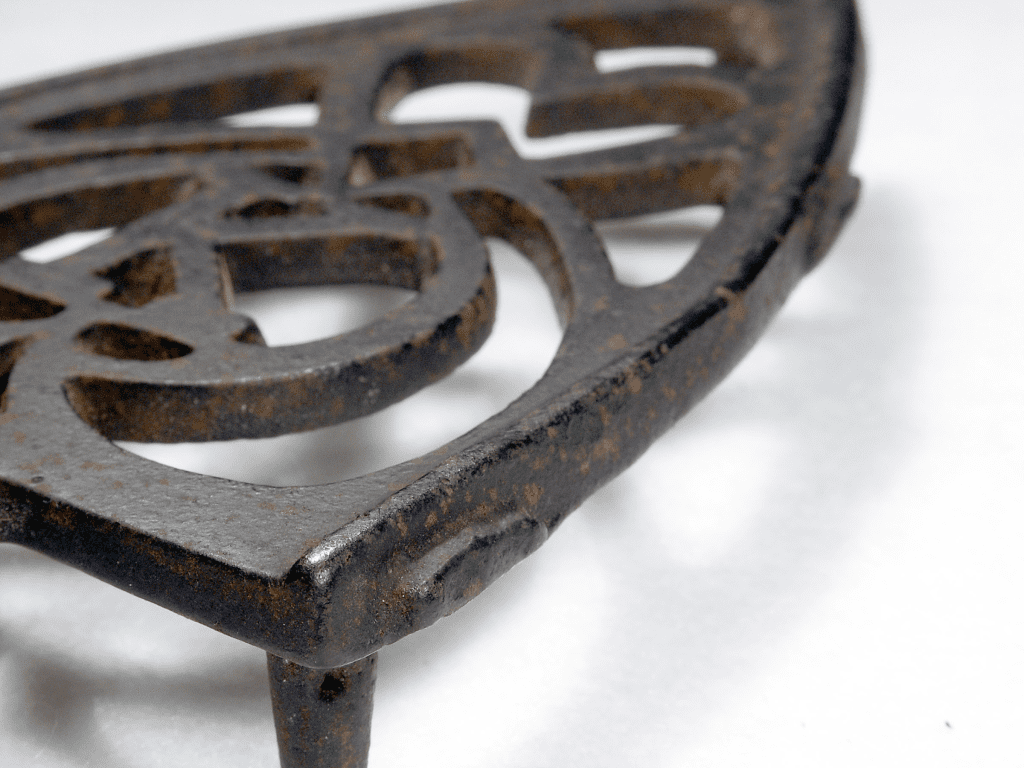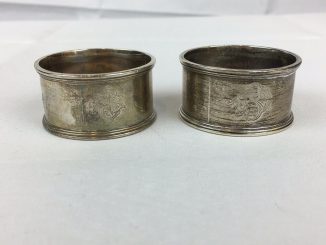Antique trivets are more than just functional kitchen tools; they are pieces of history, showcasing the craftsmanship and metalwork techniques of centuries past. In the world of collectibles, antique trivets hold a special place for their unique designs, historical value, and the way they reflect early American metal casting traditions.
What Defines an Antique Trivet?

According to U.S. Customs Laws, an antique is defined as any item that is at least 100 years old. When it comes to trivets, this means that an authentic antique piece would have been crafted in or before the early 1900s. Early American trivets, in particular, stand out due to their intricate designs, fine craftsmanship, and distinctive casting techniques.
Collectors value antique trivets not just for their utility, but for their artistic and historical significance. The design and casting quality of these trivets often far surpass modern reproductions, making them highly sought after by enthusiasts.
Types of Materials Used in Antique Trivets
Antique trivets were primarily crafted from three metals: brass, bronze, and cast iron. Each material has its own unique characteristics, and understanding these differences is key for collectors.
Brass Trivets
Brass, a softer metal, was commonly used in the creation of antique trivets. Over time, brass trivets tend to show signs of wear, such as loss of surface design, bowing in the center, or bent legs. Unlike harder metals, the cast marks on brass trivets were often removed more easily during the finishing process, making them harder to identify.
Brass trivets, though prone to wear, are still valued for their aesthetic appeal and warmth. These pieces often have a smooth, golden hue that makes them an attractive addition to any collection.
Bronze Trivets
Historic cast bronze is an alloy composed of 90% copper, 6% tin, and 4% zinc. Over time, bronze develops a beautiful patina, a natural surface change that enhances its value and appeal. Unlike brass, bronze should never be polished, as doing so could damage the patina and decrease the trivet’s historical value.
For collectors, bronze trivets represent a higher tier of craftsmanship, and their patina is considered a badge of authenticity. Simply wash these trivets with water and dry them to preserve their original charm.
Cast Iron Trivets

Cast iron was one of the most popular materials used in making antique trivets, especially in America. These trivets are known for their durability and intricate detailing. However, cast iron is a brittle material, so it’s important to handle these pieces with care to avoid damage.
Antique American iron trivets are often larger and more detailed than modern reproductions. They frequently bear casting marks, such as sprue, wedge, or gate marks, which help to identify their age and authenticity. Be sure to check the reverse or along the edges for these telltale signs.
Key Features of Antique Trivets
Several features help to identify antique trivets, and knowing what to look for can help collectors distinguish authentic pieces from reproductions.
Legs

Antique trivets often have longer legs, measuring between 1.25 to 1.5 inches or more. These legs were designed to lift the trivet high enough to dissipate heat from the surface beneath. The shape of the legs can vary—they may be straight, tapered, or take on more intricate designs. Over time, these legs may no longer be perfectly straight, but this warping adds character and authenticity to the piece.
Signature Marks
Unlike modern trivets, antique trivets were rarely signed by their makers. However, there are exceptions, such as those crafted by William B. Rimby of Baltimore, MD, who often left his mark on the reverse side. While signatures are rare, examining the trivet for distinctive casting marks can reveal clues about its age and origin.
Understanding Cast Marks on Antique Trivets

Cast marks are among the most important details for collectors, as they provide insight into when and how a trivet was made. There are three primary types of cast marks to look for: sprue marks, wedge marks, and gate marks.
Sprue Mark
A sprue mark is one of the oldest and most distinctive casting marks, commonly found on trivets made before 1865. This circular scar, measuring between 5/16″ and 1/2″ in diameter, appears on the center reverse of the trivet. Some sprue marks are smooth and shallow, while others may be rough to the touch.
If you come across a trivet with a round sprue mark, it’s likely an early piece, making it a valuable find for any collector.
Wedge Mark

The wedge mark is another early casting mark, often predating 1865. It appears as a raised, rectangular shape on the reverse side of the trivet, usually near the center of the design. Measuring around 1/8″ in width and up to 3/4″ or more in length, this mark indicates that the trivet was cast using older techniques.
Gate Mark
A gate mark is found on trivets made between 1865 and 1900. This mark typically appears along the edges of the trivet and is often left unfiled, meaning it can feel rough or prominent to the touch. After 1900, machine grinding became more common, leaving behind more uniform, spaced marks.
If you discover a trivet with a rough gate mark and irregular grinding, it’s likely a pre-1900 piece, further adding to its value as an antique.

Caring for Antique Trivets
Preserving the condition of antique trivets requires proper care, especially given their age and fragility. For brass and cast iron trivets, gently clean them with a soft cloth or brush, using mild soap if necessary. Bronze trivets, on the other hand, should simply be washed with water and dried—avoid polishing to preserve the patina.
When storing or shipping cast iron trivets, it’s essential to handle them with care, as the material can be brittle. Wrapping each piece in soft padding helps prevent damage during transit or storage.
Conclusion: Embracing the Beauty and History of Antique Trivets
Antique trivets are not only functional objects but also windows into a bygone era of craftsmanship and design. Whether made from brass, bronze, or cast iron, these trivets carry the marks of history, from their casting techniques to their distinctive wear patterns. By understanding the materials, features, and cast marks, collectors can appreciate the rich history behind each piece and ensure they’re preserving these artifacts for future generations.
When cared for properly, antique trivets become more than collectibles—they are treasured pieces of history that tell the story of early metalworking and design.


